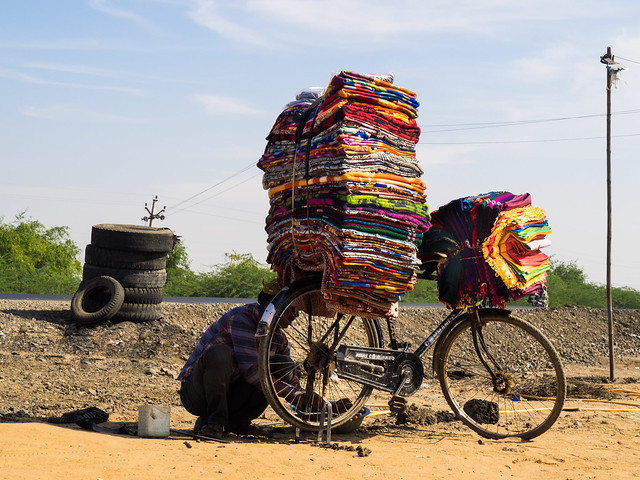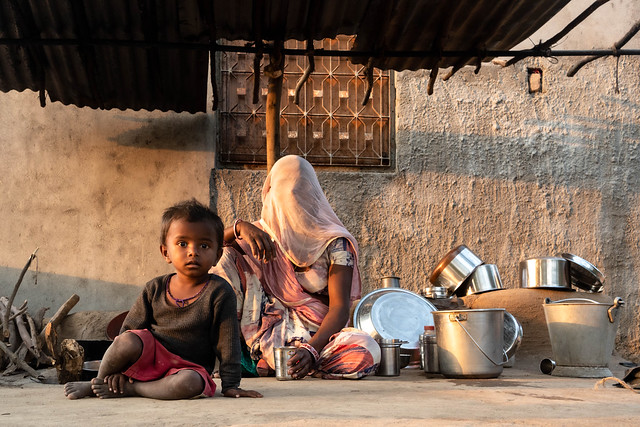COVID-19, lockdown restrictions shatter livelihoods of Rajasthan’s nomadic communities
Banjaras, the nomads of Rajasthan, earn a living by migrating to cities and selling blankets, clothes, spices and dry fruits. Because of the lockdown, they failed to sell anything this year.

Rajasthan's nomadic communities are struggling to meet ends meet since the lockdown. Photo: flickr
Not all sections of our society have been resilient enough to stay afloat despite the many strict measures introduced by various governments in the name of ‘containing’ the COVID-19 spread. The ‘poorest of the poor’, who were already at the receiving end of our failed development policies, have drowned so deep it will take them years to catch a breath.
The nomadic tribe of Rajasthan is one such marginalised group that has been unable to process the events over the past few months.
The travelling business and Covid-19
The Banjara (nomads) community residing in the Niwai and Uniyara blocks in Rajasthan’s Tonk district migrates twice every year to states like Maharashtra, Gujarat, and Delhi to sell blankets, clothes, spices, and dry fruits. The traditional arrangement is that they lend these items to reliable customers during the first visit, and recover the money in the next.
The women in the community stay back and work as labourers under the MGNREGA (Mahatma Gandhi National Rural Employment Guarantee Act) scheme.
These nomads have been historically poor and face discrimination on the basis of their caste. This year has been unusually harsh on them.
“The lockdown was announced during the time members of our community leave for different states to recover the money for the goods sold last year,” said a visibly worried Saleem Khan from the banjara community. “Unaware of the spread of the virus, many of us had already left and had to return due to the sudden chaos. Others could not leave at all,” he said.
The meagre profit these nomads make from this occupation is the only major source of income that helps them survive the entire year. With strict restrictions on movement and quarantine rules, they are finding it difficult to make their ends meet. There is neither an alternate source of employment nor do they have savings to rely on.
“It wasn’t a flourishing business anyway, but it helped us survive,” sighed Vakeel Khaan, another member of the community. “Since this model required people to invest money first and a long wait to recover it, only a few could indulge. The rest of us accompanied them as labourers. But today, each member of the community is facing similar challenges,” he said.

Systematically discriminated against
The pandemic exposed the systemic wrongs done to the nomadic communities over the years. Once part of the mainstream, they were welcomed by people of different cities along their migration routes but, things changed during the colonial rule.
They were classified as criminals under the British rule in India. This hampered their relationship with other communities. Their socio-economic growth has been far from the agenda of the country’s social-welfare programmes. Today, their literacy rates are abysmal, they have no life-skills, and are discriminated against on the basis of caste and language. The situation is so bad that despite being in the business of selling commodities on loan, they are unable to manage accounts. They are often cheated.
Banjaras not the only nomadic community
The other nomadic tribes– the Madari, Qalandar, Sighvadi, Gadiya, Lohar etc. are facing similar threats. Earlier, the Madari and Qalandar community would earn money by putting up circus on the streets and use monkeys and bears. But, with the implementation of stricter laws banning animal cruelty, they were forced to stop. Clueless, they trained their children, especially girls, to perform acrobatic acts on the streets and earned a living. In the process, they pushed kids into child labour and snatched from them their right to education. This has stopped too, with the pandemic. They are now forced to beg to survive.

What next?
“With the help of the government and some social organisations, we managed to survive these last few months. But what next?”, asked Nisar Ahmad.
“Even though the lockdown has been lifted, we are now skeptical of traveling to other locations fearing the rapid spread of the coronavirus. We need employment opportunities right here in our region,” he said.
The members of the nomadic communities believe they will be able to survive if they are provided with work opportunities at home, in which both men and women can participate. “Women in the family can prepare the raw material while men can go out and sell it in the market. For example, doing handwork on saris, preparing and selling spices, making toys or any other such work,” explained Nisar. The fear of being left out of the schemes and services of the government aimed at supporting the poor and the disadvantaged looms large over the nomadic tribes. In this chaos, all they want is that their voices to be heard and demands be acted on by the administration.
This article has been sourced from Charkha Features.

